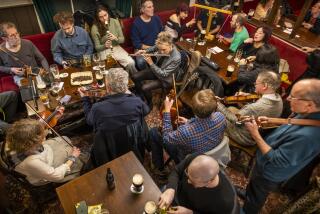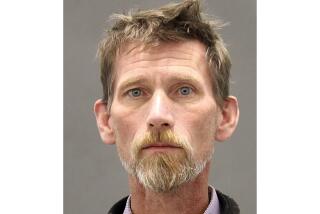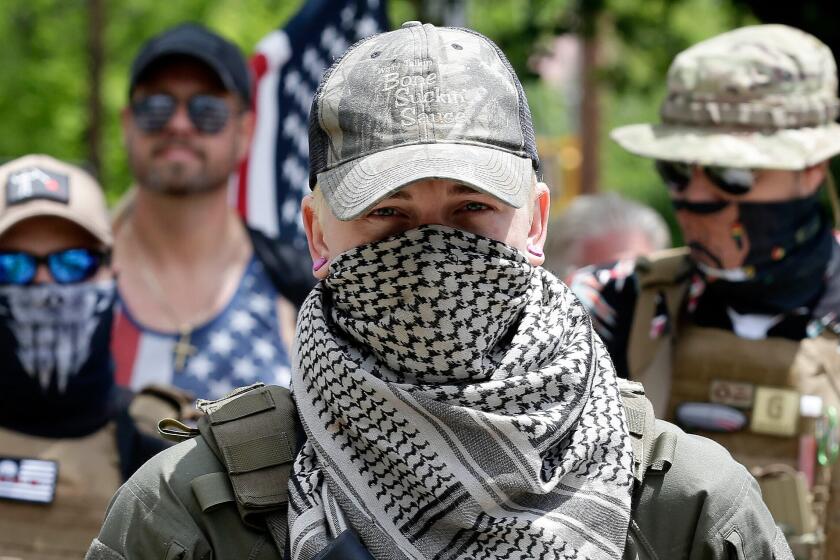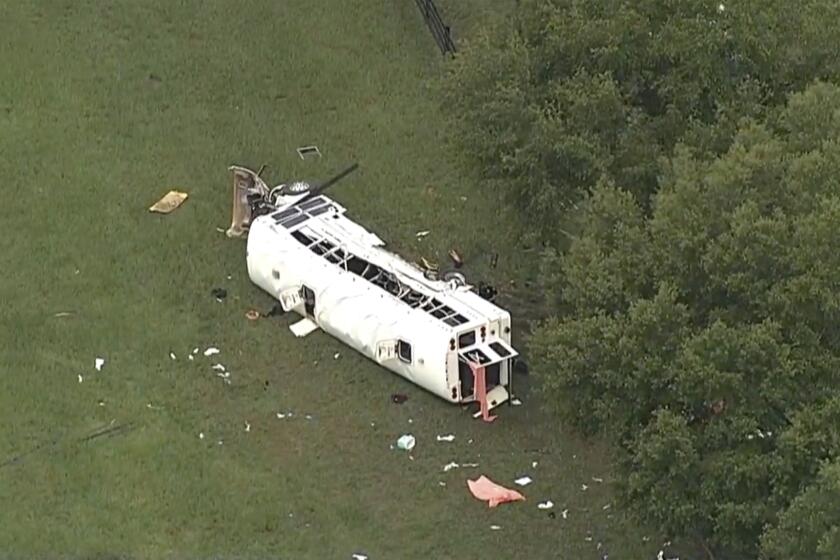Economic slump rains on many parades
So much for everyone loving a parade.
In New York, and in cities and towns across the country, everyone including Mother Goose and the patron saint of Ireland is under pressure from city officials trying to save money and placate business owners who say the recession has been bad enough without customers being driven off by closed streets and clogged sidewalks.
Los Angeles canceled its St. Patrick’s Day Parade. St. Petersburg, Fla., called off the Festival of States Day Parade, which for 89 years celebrated the start of spring. Last year in Massachusetts, Plymouth — landing spot of the Pilgrims — scrapped its Fourth of July parade.
The 63-year-old Mother Goose Parade in El Cajon, considered the official kickoff of the winter holiday season in the San Diego suburb, was in danger of being canceled last November after the city stopped contributing money. Only a fundraising frenzy by parade organizers and a slashed budget kept the event alive.
Cities including Philadelphia, home to the New Year’s Day Mummers Parade for more than 100 years, have reduced or eliminated contributions, forcing parades to seek corporate funding and private donations — a challenge when individuals are struggling and mom-and-pop businesses that might have propped up community events are being swallowed by corporate giants.
“You don’t have that civic and community glue anymore, and you have to rely on dole-outs from big corporations? Come on — you’re not going to get it,” said Gerald Celente of the Trends Research Institute, a New York-based monitoring group.
He said the loss of such events was especially hard for small, economically depressed communities. Parades are a “big thing for a lot of people who don’t have a lot,” said Celente, who expects the trend to continue.
It’s not just parades that are affected. Summer’s traditional celebrations, such as Fourth of July bashes and street festivals, also are threatened. Plymouth is scrambling to raise money to hold its Independence Day fireworks display and revive the Fourth of July parade.
Seattle’s extravagant fireworks display, a tradition for 90 years, faced cancellation until a fundraising push this month raised half a million dollars to preserve it. Half the money came from Microsoft and Starbucks.
Chicago was not so lucky. It canceled a traditional July 3 fireworks extravaganza, opting instead for three more modest shows elsewhere in the city.
In New York City, where each year millions of people march in or watch scores of parades celebrating everything from gay pride to U.S.-Israeli relations, chipping away at such events can be a touchy subject. In February, the city announced restrictions that police spokesman Paul J. Browne said would save about $3.1 million a year in overtime pay.
“It meant we did not have to lay off 80 civilian employees,” Browne said of the rules, which cut parade routes by about 25% and limit durations to five hours.
The rules took effect April 1, and already there are signs of dissent. Police have told organizers of the massive gay pride march in June that they must begin nearly 20 blocks south of the traditional start, but the original spot was chosen because it is near St. Patrick’s Cathedral.
“People wanted to be able to march by the cathedral to let the Catholic Church know we’re here,” said Arthur Finn, co-chairman of Heritage of Pride, which manages the event. Finn said he anticipated opposition in the gay community to the mandate.
The first parade affected by the rules was this month’s Tartan Day Parade celebrating Scottish heritage. Its 13-block route was down to 10 blocks, making it “cozier and more compact,” said the parade president, Margaret Kennedy. Kennedy said parade organizers understood the need to cut costs. But she also noted the money these events bring to the city.
A group that carved and donated to the parade a 26-foot-long caber — the pole tossed as a show of Scottish strength — sent 23 people from Glasgow to march up Sixth Avenue. “That means revenue to hotels, bars, restaurants,” Kennedy said.
The Macy’s Thanksgiving Day Parade alone draws thousands of viewers along its more than 2.6-mile route. The 249-year-old St. Patrick’s Day Parade featured 150,000 marchers and far more viewers as it crawled up Fifth Avenue through midtown, past St. Patrick’s Cathedral, through the city’s premier shopping district and along Central Park. Like other mega-parades, it usually runs for longer than five hours, meaning the number of marchers could be cut, along with the distance.
Betty Hoey, who watched this year’s St. Patrick’s Day Parade from viewing stands along Central Park, said that cuts made sense given the economy, but that youngsters might not take away the same lessons from a smaller parade. “This brings unity. It brings different ethnic groups together,” Hoey said as a troupe of bagpipers in kilts marched past.
For businesses lining Fifth Avenue, it also brings a day of lost revenue, as do the other jumbo parades that use the famous thoroughfare. They include the Puerto Rican Day Parade, Columbus Day Parade, Hispanic Day Parade, Presidents Day Parade, Veterans Day Parade, and the Lesbian, Gay, Bisexual and Transgender Pride march.
Other than some restaurants, most businesses suffer a “significant hit” with each one, said Tom Cusick, president of the 5th Avenue Business Improvement District. “The mentality is, ‘I don’t want to be in the area unless I want to see the parade,’ ” Cusick said, estimating that some stores see as much as an 85% drop in business as shoppers steer clear.
Late on St. Patrick’s Day, as the sun began to set, three weary revelers slumped onto the sidewalk and leaned back against the windows of a posh Fifth Avenue shoe store. Not for long, though. An exasperated-looking store employee quickly leaned out of the front door and told the young men to take their green-clad selves elsewhere.
Celente said it was doubtful parades that were trimmed or canceled would return to their old selves, even if the economy rebounded, because of the time it would take to find new sponsors and to rebuild the structures that kept the events going in their heydays. It also will be impossible to recapture the lost exuberance, he said.
“It’s the smell, the touch, the feel,” Celente said. “They’re gone and forgotten, and it’s very hard to restore them.”
More to Read
Start your day right
Sign up for Essential California for news, features and recommendations from the L.A. Times and beyond in your inbox six days a week.
You may occasionally receive promotional content from the Los Angeles Times.







